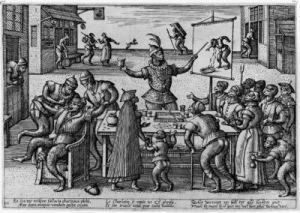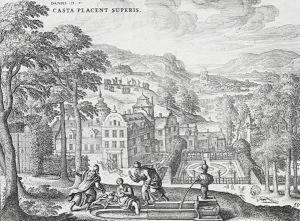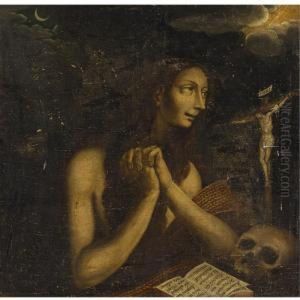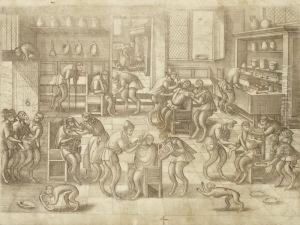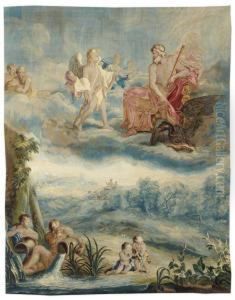Pieter Ii Van Der Borcht Paintings
Pieter II van der Borcht was a Flemish artist born around 1525-1530 in Mechelen, part of the Habsburg Netherlands, which is present-day Belgium. His exact birth date is not documented, but his career suggests this approximate period. He is sometimes confused with his father, Pieter van der Borcht the Elder, who was also an artist, and his son, Pieter III van der Borcht, continuing the family tradition in the arts.
Pieter II van der Borcht was primarily known for his work as an engraver, illustrator, and printmaker, although he may have also engaged in painting, like his father. His engraved works often depicted religious themes, allegorical scenes, and occasionally landscapes or genre scenes. He was part of the Northern Renaissance, a period when the art of the Low Countries was influenced by the Italian Renaissance, yet retained a distinctively Northern style, with a focus on detail and realism.
Van der Borcht's work was characterized by its intricate detail and fine line-work, which was typical of the Flemish engraving tradition. He contributed illustrations to several books, including emblem books, which were popular during the Renaissance. Emblem books contained collections of symbolic pictures with accompanying texts (mottos and verses) that conveyed moral or philosophical messages.
Throughout his career, van der Borcht's engravings were highly regarded, and he was actively involved in the cultural life of Mechelen. His works were disseminated widely across Europe, which was common for prints at the time, thereby influencing other artists and the visual culture beyond his immediate region.
He lived through an era of significant religious and political turmoil, as the Reformation and the conflicts between the Protestant North and Catholic South in the Low Countries affected all aspects of life, including the arts. Despite these challenging times, van der Borcht maintained his artistic production, contributing to the rich tapestry of Northern Renaissance art.
Pieter II van der Borcht passed away in 1608 in Mechelen. His legacy continued through his descendants, some of whom also became artists. Unfortunately, like many artists of his time, his work has not been as thoroughly documented as that of some of his contemporaries, and as a result, his profile in art history is not as prominent. However, his contributions to the field of engraving and illustration during the Northern Renaissance remain significant.
